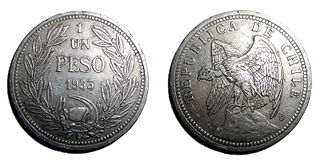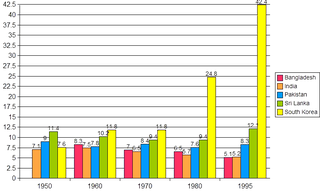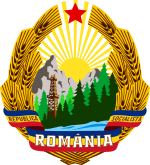The nationalization of the means of production was a measure taken by Romania's new Communist authorities in order to lay the foundation of socialism. The act that allowed this measure to take place was Law 119, adopted by the Great National Assembly on June 11, 1948. Article 1 decreed subject to nationalization "all the wealth of the soil not in the property of the state at the time of entry into force of the Constitution of the Romanian People's Republic, as well as individual enterprises, societies of any type and private industrial, bank, insurance, mining, transport and telecommunications associations". Nationalized (generally without any form of compensation) were 8,894 industrial, mining, transport, banking and insurance companies, followed in November 1948 by 383 cinemas and medical-sanitary facilities. By 1950, the measure was applied to chemical enterprises, pharmacies and remaining economic entities.
The nationalization [1] also included a significant number of homes. The figure of around 400,000 buildings is regularly mentioned. According to Societatea Academică din România (SAR) between 241,000 and 600,000 properties [2] were affected by the measure.
The nationalization begun in 1948, together with the collectivization of agriculture (1949–62), were decisive in undoing the capitalist economy and establishing a socialist economy based on state-owned or cooperative property.
After the fall of communism in Romania, the state has tried to compensate homeowners and enterprise owners who could not recover their houses, industries, or lands. A special fund dedicated to compensation was created in 2005: Fondul Proprietatea.

The Constitution of the Czechoslovak Socialist Republic, promulgated on 11 July 1960 as the constitutional law 100/1960 Sb., was the third constitution of Czechoslovakia, and the second of the Communist era. It replaced the 1948 Ninth-of-May Constitution and was widely changed by the Constitutional Law of Federation in 1968. It was extensively revised after the Velvet Revolution to prune out its Communist character, with a view toward replacing it with a completely new constitution. However, this never took place, and it remained in force until the dissolution of Czechoslovakia in 1992.

Nicolae Văcăroiu is a Romanian politician, member of the Social Democratic Party (PSD), who served as Prime Minister between 1992 and 1996. Before the 1989 Revolution he worked at the Committee for State Planning, together with Theodor Stolojan. He was the President of the Senate of Romania for almost eight years, during two legislatures.

Félix Gouin was a French Socialist politician who was a member of the French Section of the Workers' International (SFIO).

The Fourth Brazilian Republic is the period of Brazilian history between 1946 and 1964 also known as the "Republic of 46" or as the "Populist Republic". It was marked by political instability and military's pressure on civilian politicians which ended with the 1964 Brazilian coup d'état and establishment of Brazilian military government.
Nationalization is the process of transforming privately-owned assets into public assets by bringing them under the public ownership of a national government or state. Nationalization usually refers to private assets or to assets owned by lower levels of government being transferred to the state. Nationalization contrasts with privatization and with demutualization. When previously nationalized assets are privatized and subsequently returned to public ownership at a later stage, they are said to have undergone renationalization. Industries often subject to nationalization include the commanding heights of the economy – telecommunications, electric power, fossil fuels, railways, airlines, iron ore, media, postal services, banks, and water – though, in many jurisdictions, many such entities have no history of private ownership.

The nationalization of the Chilean copper industry, commonly described as the Chileanization of copper was the process by which the Chilean government acquired control of the major foreign-owned section of the Chilean copper mining industry. It involved the three huge mines known as 'La Gran Mineria' and three smaller operations. The Chilean-owned smaller copper mines were not affected. The process started under the government of President Carlos Ibáñez del Campo, and culminated during the government of President Salvador Allende, who completed the nationalization. This "act of sovereignty" was the espoused basis for a later international economic boycott, which further isolated Chile from the world economy, worsening the state of political polarization that led to the 1973 Chilean coup d'état.

The Beneš decrees were a series of laws drafted by the Czechoslovak government-in-exile in the absence of the Czechoslovak parliament during the German occupation of Czechoslovakia in World War II. They were issued by President Edvard Beneš from 21 July 1940 to 27 October 1945 and retroactively ratified by the Interim National Assembly of Czechoslovakia on 6 March 1946.

Clement Attlee was invited by King George VI to form the Attlee ministry in the United Kingdom in July 1945, succeeding Winston Churchill as Prime Minister of the United Kingdom. The Labour Party had won a landslide victory at the 1945 general election, and went on to enact policies of what became known as the post-war consensus, including the establishment of the welfare state and the nationalisation of some industries. The government's spell in office was marked by post-war austerity measures, the violent crushing of pro-independence and communist movements in Malaya, the grant of independence to India, the engagement in the Cold War against Soviet Communism as well as the creation of the country's National Health Service (NHS).

The SovRoms were economic enterprises established in Romania following the communist takeover at the end of World War II, in place until 1954–1956.

The Great National Assembly was the legislature of the Socialist Republic of Romania. After the overthrow of Communism in Romania in December 1989, the Great National Assembly was dissolved by decree of the National Salvation Front (FSN) and eventually replaced by the bicameral parliament, made up of the Chamber of Deputies and the Senate.
On the eve of the 1921 revolution, Mongolia had an underdeveloped, stagnant economy based on nomadic animal husbandry. Farming and industry were almost nonexistent; transportation and communications were primitive; banking, services, and trade were almost exclusively in the hands of Chinese or other foreigners. Most of the people were illiterate nomadic herders, and a large part of the male labour force lived in the monasteries, contributing little to the economy. Property in the form of livestock was owned primarily by aristocrats and monasteries; ownership of the remaining sectors of the economy was dominated by Chinese or other foreigners. Mongolia's new rulers thus were faced with a daunting task in building a modern, socialist economy.
Between 1950 and 1960, the imperial government of Ethiopia enacted legislation and implemented a new policy to encourage foreign investment in the Ethiopian economy. This new policy provided investor benefits in the form of tax exemptions, remittances of foreign exchange, import and export duty relief, tax exemptions on dividends, and the provision of financing through the Ethiopian Investment Corporation and the Development Bank of Ethiopia. In addition, the government guaranteed protection to industrial enterprises by instituting high tariffs and by banning the importation of commodities that might adversely affect production of domestic goods. Protected items included sugar, textiles, furniture, and metal. The government also participated through direct investment in enterprises that had high capital costs, such as oil refineries and the paper and pulp, glass and bottle, tire, and cement industries. In 1963, with the Second Five-Year Plan under way, the government enacted Proclamation No. 51. The proclamation's objective was to consolidate other investment policies enacted up to that period, to extend benefits to Ethiopian investors, and to create an Investment Committee that would oversee investment programs. In 1966 the Ethiopian government enacted Proclamation No. 242, which elevated the Investment Committee's status as an advisory council to that of an authorized body empowered to make independent investment decisions. Thus, by the early 1970s, Ethiopia's industrialization policy included a range of fiscal incentives, direct government investment, and equity participation in private enterprises.
Fondul Proprietatea is a joint-stock company established by the Romanian state, and is intended to become entirely private and independent from the state. Its specificity lies in the fact that its purpose and its operations are governed by special legislation. Shareholders are limited to those dispossessed owners of their property by the Romanian state during the Communist regime.
The Government of the Soviet Union, formally the All-Union Government of the Union of Soviet Socialist Republics, commonly abbreviated to Soviet Government, was the executive and administrative organ of state in the former Soviet Union. It had four different names throughout its existence; Council of People's Commissars (1923–1946), Council of Ministers (1946–1991), Cabinet of Ministers and Committee on the Operational Management of the National Economy. It also was known as Workers-Peasants Government of the Soviet Union.

The Nationalisation process in Pakistan was a policy measure programme in the economic history of Pakistan, first introduced, promulgated and implemented by Prime Minister Zulfikar Ali Bhutto and the Pakistan Peoples Party to lay the foundation of socialist economics reforms to improve the growth of national economy of Pakistan. Since the 1950s, the country had undergone a speedy industrialisation and became an industrial paradise in Asia. But, as time progressed, the labour trade unions and labour-working class had increasingly strained relations with the industrial business oligarch class, having neglected to improve working conditions and failing to provide a healthy and safe environment for the workers in these industrial industries.

The economy of the Socialist Republic of Romania was centrally planned, similar to the one of the Soviet Union. Most of the means of production were owned by the state, which established production plans as part of the Five-Year Plans.
The Ministry of Oil Industry was a government ministry in the Soviet Union.
After the end of World War II, the Communist government in Poland instituted large scale nationalizations in Poland starting in 1944.

The 1940 Constitution of Estonian Soviet Socialist Republic was unanimously adopted by the "2nd People's State Assembly", a puppet legislature in the then Soviet-occupied Estonia, on 25 August 1940.











